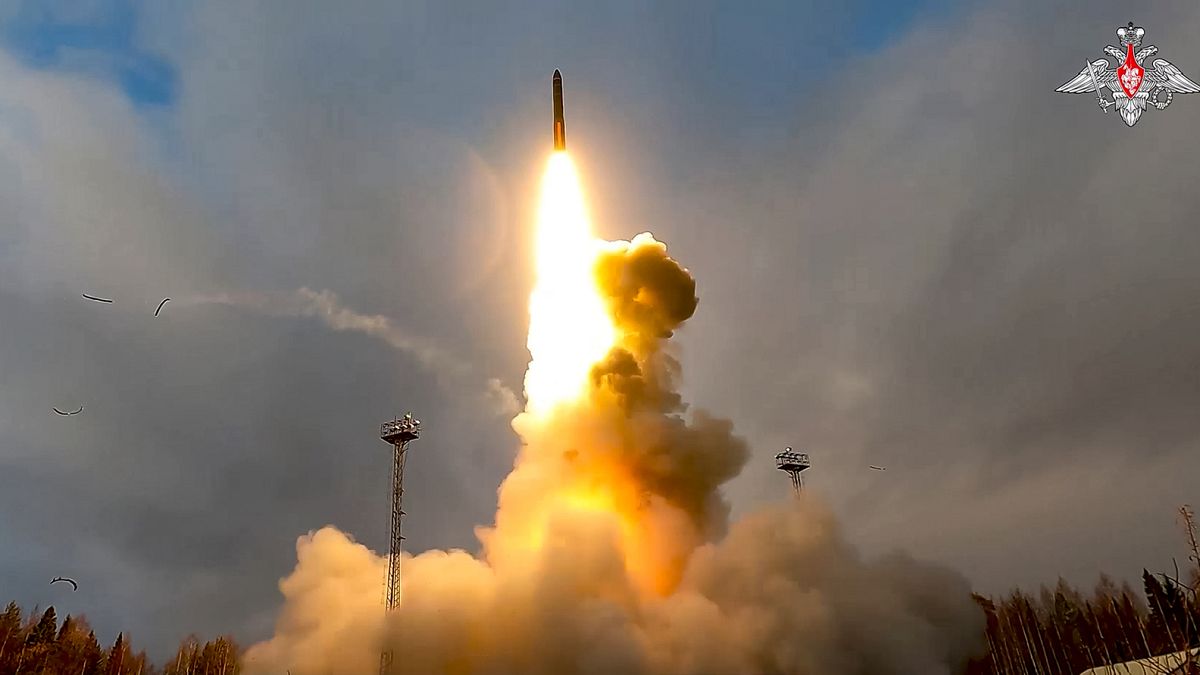The Atomium: A gateway to understanding nuclear energy

In this Q&A episode, we take you on a time travel to explore the origins of nuclear energy and address your questions about it with Diane Cameron from the Nuclear Energy Agency.
From April to October 1958, Brussels hosted the first World’s Fair after the Second World War.
The city underwent an extensive urban transformation to make sure that visitors and residents could reach the Expo site in the Heysel district, in the north of the city, and admire its masterpiece: The Atomium.
Designed by engineer Andre Waterkeyn and architects André and Jean Polak, the Atomium is a huge model of an iron crystal magnified 165 billion times.
The purpose of the Atomium was to show that nuclear power could be used not only as a weapon of mass destruction but also as a source of energy and scientific progress.
Euronews Tech Talks visited the Atomium, collected some of its visitors’ questions about nuclear energy and put them to Diane Cameron, Head of Nuclear Technology Development and Economics at the Nuclear Energy Agency.
What is nuclear energy?
Nuclear energy comes from the centre of atoms, where lots of power is stored. This energy can be released in two ways: nuclear fission and nuclear fusion.
Nuclear fission happens when an atom is split into small pieces releasing energy.
“Nuclear fission produces about 10 per cent of the electricity for the world, and that’s from over 400 reactors that are deployed and have been operating around the world in over 30 countries,” Cameron says.
Nuclear fusion, on the other hand, happens when two atoms are joined to make a bigger one, releasing even more energy.
“Nuclear fusion is still in research and development, and it’s a very exciting and promising field of possible energy generation,” Cameron explains.
What do we do with nuclear waste and is nuclear energy green?
In the 1950s, many countries followed the wave of enthusiasm surrounding nuclear energy and opened nuclear power plants.
This momentum was interrupted in 1986 by the Chornobyl disaster, which raised many concerns about nuclear power and led many countries like Italy to phase out of this type of energy.
Among the questions that became central in the nuclear energy debate is the one concerning the management of its waste.
“All of the waste that has been produced by nuclear energy power plants over the last 60 years is accounted for and has been and continues to be safely managed,” Cameron says.
“Today we have been managing and spending nuclear fuel or nuclear waste aboveground in dry storage”.
Another frequent question about nuclear energy concerns its renewability. According to Cameron, the term green is vague as every type of energy has its pros and cons.
“The advantages of nuclear are its incredible energy density, its long-term, low-cost, and good economics, and the fact that it doesn’t produce any greenhouse gas emissions,” she explains.
Find the answers to more questions on the Q&A episode of Euronews Tech Talks.
Additional sources • Executive producer: MARTA RODRIGUEZ
World News || Latest News || U.S. News
Source link



